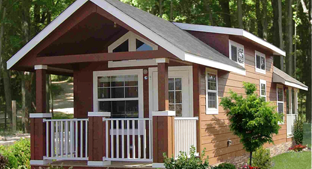Did you know?
BAKKEN OIL FIELD
All the major railroads are expanding across the region to
accommodate sand in one way or another.
In two years, Union Pacific recorded a 265 percent increase
in frac sand shipments. The railroad has rebuilt
interchanges in Wisconsin, lengthened track at a Mankato
rail yard and will lengthen another track this year. The
company built a side track at Bricelyn, Minn., lengthened
several tracks at a rail yard in Council Bluffs, Iowa, and
is considering four more yard improvements in Wisconsin and
Iowa.
Over the past six months, Canadian Pacific has struck deals
with new sand-processing plants in Tunnel City, Oakdale and
Sparta, Wis. The company is building a facility in Makoti,
N.D., where sand will be loaded on trucks and driven to
wells in the Bakken oil fields of North Dakota.
Unless energy companies figure out a less expensive way to
get oil and gas out of the ground, they're going to need
sand from Wisconsin and Minnesota, said Jean-Jacques Ruest,
chief marketing officer for Canadian National. He expects
railroads to be busy in western Wisconsin for 10 years,
probably 20, maybe 30.
Boost to industry
The added rail service doesn't only benefit energy
companies. For Terry Schissel, president of Shadow Plastics,
fracking means his business can survive in Rice Lake.
Thirteen years ago, companies along the Union Pacific line
that runs north from Chippewa Falls through Bloomer, New
Auburn and Chetek faced an existential threat: the
possibility of no rail service.
Shadow Plastics, which employs 35 people, had just built a
new plant on the south side of Rice Lake, including a
railroad spur where the company gets 200,000 pound loads of
tiny plastic pellets by rail. The company pumps the pellets
into machines that melt the plastic into liquid and blow out
industrial plastic bags.
Schissel either had to build a loading facility on an active
railroad dozens of miles away and buy or rent a fleet of
trucks, or he had to move the company. "We were freaking
out," Schissel said. "We'd made the commitment to rebuild
here and spent all that money."
Some 1,000 jobs depended on the rail connection, which had
become a tenuous lifeline for companies like Jennie-O
Turkey, Bell Pole and Lumber, ABC Truss and Bloomer
Plastics.
So the counties and businesses formed a coalition called the
Western Wisconsin Rail Transit Authority, which got federal
and state grants to keep the line alive. The authority hired
Progressive Rail, a Lakeville company, to operate trains on
the line, and for five years the company operated there at a
loss.
Sand boom
In 2011, the former Enron -- now called EOG Resources --
opened one of the largest sand processing plants in the
United States on the north edge of Chippewa Falls. Energy
companies have since built three more plants to the north,
all within 2 miles of New Auburn. A fourth is going up along
Old Highway 53.
The construction site with its giant blue silos, towering
cranes, workers climbing on rafters, and brand-new rail yard
"looks like Valleyfair," says Jeremy Urlacher, a vice
president at Progressive Rail who just moved from the Twin
Cities to Chetek so he can keep up with track maintenance.
On a white-sky Wednesday in August, on-and-off showers
sprayed across the uneven patchwork of field, forest, lake
and wetland around New Auburn, which has become the heart of
sand country. Rural Wisconsin chronicler Michael Perry
summarized New Auburn at the turn of the millennia by
writing, "Maybe that's all you need to know about this town
-- the train doesn't stop here anymore."
Now the train stops. Hopper cars full of cream-colored sand
sit on the tracks for a mile north of town. Progressive just
secured a 30-year lease on the rail line and will renovate
it for several years. Instead of 2,000 rail cars per year,
the line now carries 3,000 cars per month.
Progressive Rail president Dave Fellon sees railroads as the
bedrock of the industrial economy, and himself as an
industrial developer, trying to persuade companies to expand
or build along the rail.
"We are not just focusing on frac," Fellon said. "The
projects I'm working on today are three-quarters non-frac,
and a quarter frac. And these are significant industrial
development projects, the big ones."
In aerial photos, ghosts of railroads still trace paths
across southeast Minnesota -- a tree line angling through a
cornfield north of Eyota, a meandering bike trail that
connects Red Wing and Cannon Falls.
No rail has been rebuilt there, but if a whole cluster of
mines opens for business, the railroads might perk up, said
Dave Christianson, a freight and rail planner at the
Minnesota Department of Transportation.
"St. Charles definitely is the center of projected sand
mining," Christianson said. "You could very easily see some
branch lines come off the main line at St. Charles to try to
get closer to the mines."
He puts the odds at 50-50 for rail companies to rebuild old
lines in Minnesota. Canadian Pacific has announced no plans
to add lines. It already has several deals in Wisconsin
along existing tracks.
"It's evolving," said Ed Greenberg, a spokesman for Canadian
Pacific. "We're continuing to work with the energy industry
on where we can provide efficient and rail-ready service."
Written by Adam Belz -Star Tribune Business
Call for updated inventory @ 888-980-2267.



